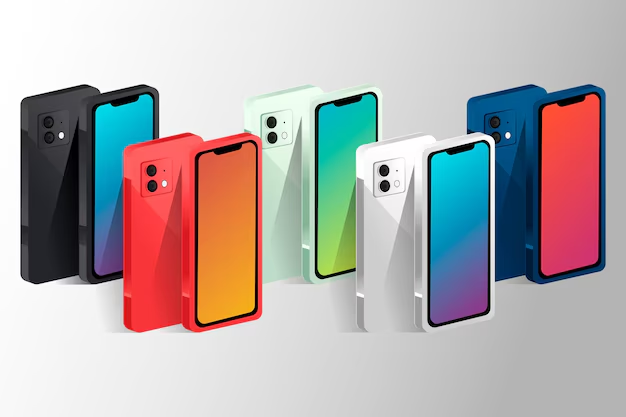Mobile phones, colloquially referred to as “mobiles,” have become an indispensable part of human life. Once a luxury accessible to a select few, mobiles have evolved into essential tools that power communication, productivity, and entertainment across the globe. Their ubiquity has not only changed the way people connect but has also impacted industries, education, healthcare, and social interactions. This article explores the history, advancements, and societal effects of mobiles, shedding light on their role in shaping the modern world.
The Dawn of Mobile Technology
The journey of mobiles began in the 1970s with the advent of the first-generation (1G) mobile phones. These devices, primarily used for voice communication, were bulky, expensive, and had limited functionality. In 1973, Motorola introduced the first handheld mobile phone, the Motorola DynaTAC, signaling the potential for mobile communication. It wasn’t until the 1980s that mobiles started becoming somewhat more affordable and practical, thanks to technological advancements and wider network coverage.
The shift to second-generation (2G) in the 1990s marked a critical milestone. With the introduction of GSM (Global System for Mobile Communication), mobiles transitioned from analog to digital technology, enabling text messaging (SMS) and improved voice clarity. This period also saw mobiles becoming smaller and more portable, leading to increased adoption.
The Smartphone Revolution
The early 2000s ushered in an era of rapid transformation with the advent of smartphones. Devices such as the BlackBerry and Nokia Communicator introduced features like email, web browsing, and rudimentary applications. However, the true revolution began in 2007, when Apple unveiled the iPhone. The iPhone redefined mobiles by integrating a touch screen, a user-friendly interface, and access to a growing ecosystem of apps through the App Store.
Android, introduced by Google in 2008, further democratized smartphones by offering a flexible, open-source operating system. Affordable models by brands like Samsung, Huawei, and Xiaomi flooded the market, making smartphones accessible to millions. Over the years, mobiles have evolved to include features like advanced cameras, facial recognition, AI-powered virtual assistants, and ultra-fast internet connectivity via 4G and 5G.
Mobiles: A Multidimensional Tool
Modern mobiles are much more than communication devices. They are miniature computers that serve as hubs for various activities:
Communication and Social Connection
Mobiles have made communication instantaneous, regardless of distance. Messaging apps like WhatsApp, social media platforms like Facebook and Instagram, and video conferencing tools like Zoom have strengthened global connectivity. For many, mobiles are a lifeline to stay connected with friends, family, and professional networks.
Access to Information
With mobile internet and powerful search engines, information is just a tap away. From real-time news updates to tutorials, mobiles have democratized access to knowledge, empowering people across all demographics to learn and grow.
Entertainment
Mobiles have transformed how people consume entertainment. Streaming platforms like Netflix, YouTube, and Spotify provide on-demand access to movies, music, and videos. Mobile gaming has emerged as a billion-dollar industry, offering experiences that rival console-level quality.
Tools for Productivity
Mobiles have redefined the workplace by enabling remote work and virtual collaboration. Applications like Slack, Microsoft Teams, and cloud-based tools help professionals manage tasks, communicate with colleagues, and attend virtual meetings seamlessly. Additionally, mobile banking and shopping have brought convenience to financial transactions and retail.
Impact on Education and Health
Educational apps and e-learning platforms have made mobiles vital tools for students and educators, especially during the COVID-19 pandemic. Similarly, health apps, telemedicine services, and fitness trackers empower users to monitor and improve their well-being.
Challenges and Concerns
While mobiles offer countless benefits, they come with challenges:
Overdependence and Addiction
Excessive mobile usage can lead to addiction, impacting mental health and productivity. Features designed to keep users engaged, such as notifications and endless scrolling, can result in distraction and reduced focus.
Privacy and Security
Mobiles hold vast amounts of personal data, making them a target for cybercriminals. From data breaches to spyware, users are increasingly concerned about their privacy.
Digital Divide
Although mobiles have become more affordable, a significant portion of the global population still lacks access to smartphones and reliable internet, limiting their opportunities for growth and inclusion.
The Future of Mobiles
The future of mobiles lies in continued innovation and integration. The rollout of 5G networks is expected to revolutionize mobile connectivity, enabling faster data transfer, reduced latency, and enhanced applications like augmented reality (AR) and virtual reality (VR). Foldable phones and devices with modular designs are pushing the boundaries of hardware, while advancements in AI promise smarter, more personalized experiences.
Moreover, the integration of mobiles with the Internet of Things (IoT) will further enhance automation and smart living. For example, mobiles could become central controllers for connected homes, enabling users to manage appliances, security systems, and energy usage remotely.
Conclusion
From their humble beginnings as simple voice communication tools to their current status as indispensable multifunctional devices, mobiles have revolutionized the way humanity interacts with technology and the world. Their impact on communication, education, healthcare, entertainment, and productivity is unparalleled. However, as we embrace their potential, it’s important to address challenges like addiction, security concerns, and the digital divide.
As technology evolves, so too will mobiles, becoming even more integral to our daily lives. By leveraging their capabilities responsibly and inclusively, mobiles can continue to bridge gaps, foster innovation, and improve quality of life for people around the globe.


